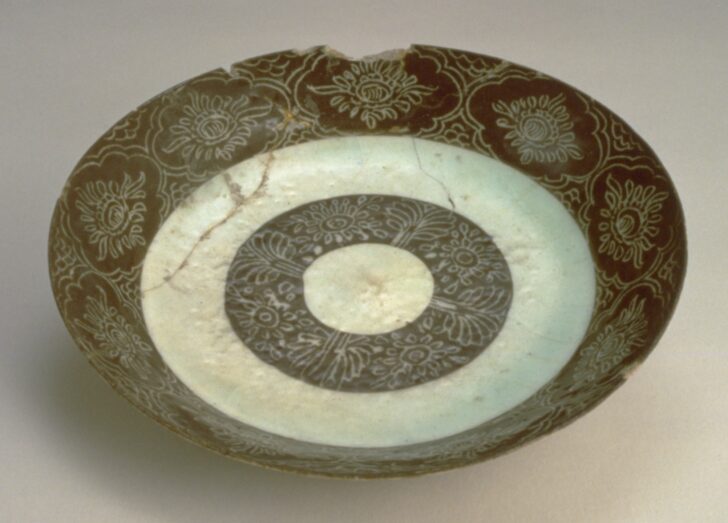Plate
Iranian

Description
Subject Matter:
This pottery style and design is associated with that of 19th century Nayin, Iran. The white paste is covered with a brown slip around the inside rim. Through the slip, a floral design has been incised and a dull transparent glaze has been applied.
The main characteristics of Qajar art include bold and sometimes garrish use of color, especially on pottery. Ceramics of this style are sometimes associated with Tehran, Shiraz, Isfahan and/or Nayin in the 19th century. Vessels of this type usually exhibit floral designs in blue, purple, brown, and/or green. Flowers and willow patterns of Chinese influence are usually found on Nayin potteries such as this.
Physical Description:
This Qajar plate is intricately decorated with negative incised floral designs on concentric brown bands which encircle the center and rim. The paste is a gray-white with a glossy glaze applied.The concentric bands alternate between purple-brown and green-white. The plate is signed on the bottom exterior: Hussayn Muhammad, 1286.
This plate is a representative example of the pottery associated with the town of Nayin in the 19th century. It is made of white paste covered with a brown slip around the inside rim. Through the slip, a floral design has been incised and a dull transparent glaze has been applied. Some other examples are more elaborately decorated with bouquets of flowers or lengthy inscriptions in the center portion of the interior.
Usage Rights:
If you are interested in using an image for a publication, please visit https://umma.umich.edu/request-image/ for more information and to fill out the online Image Rights and Reproductions Request Form.